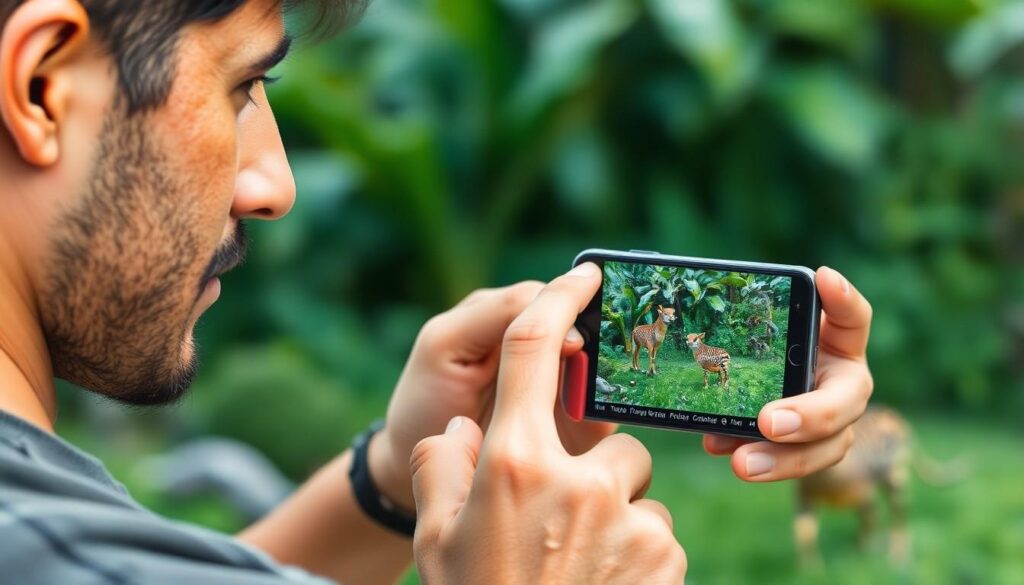Photo Identifier: Best Tools and Tips for Identifying Images Quickly and Accurately
Last Updated on March 4, 2025 by admin
Ever looked at a photo and wondered what or who you’re actually seeing? That’s where a photo identifier comes in. It’s like having a digital detective that can analyze images and provide you with details you might not have noticed or known. Whether you’re identifying a plant, a landmark, or even a person, this tool has become a game-changer.
Download AI Photo Identifier for iOS : Id6501988364
For Android: Details
I’ve found that photo identifiers are more than just handy—they’re fascinating. They combine technology and curiosity, making it easier to explore the world around us. From casual users to professionals, everyone can benefit from the accuracy and convenience these tools bring.
What Is A Photo Identifier?
A photo identifier is a tool or software designed to analyze images and provide detailed information about the subjects or elements within them. These tools use advanced algorithms to identify objects, landmarks, plants, animals, or even people in a photo. By processing uploaded pictures or using a device’s camera in real-time, they match the image with data from comprehensive databases to deliver accurate results. What Is Google Lens Complete Guide.
Photo identifiers are often integrated into apps and platforms like Google Lens, where users can identify objects by simply tapping items on their phone screen. For instance, identifying a flower, a piece of furniture, or a landmark becomes easier with these tools. Some tools, like reverse image lookup tools, focus on finding similar photos or discovering information about the original creator of an image.

Users can perform searches by uploading photos, pasting image URLs, or taking live pictures. Platforms like Google Images allow users to discover similar photos online, making them a reliable reverse image finder. Additionally, many modern devices, including Android phones and iPhones, come equipped with apps or features that include photo identification technology, streamlining the process for users without worrying about compatibility.
Photo identifiers often merge practicality with advanced computing, offering data in seconds. Whether identifying obscure objects or finding a keyword-rich database entry, these tools improve how users interact with images across the web and on their devices.
Key Features Of A Photo Identifier
A photo identifier is an advanced tool designed to analyze and interpret images, providing detailed information about the objects or subjects in the picture. Its functionality depends on various features that enhance user experience and accuracy. Google Lens App.
Accuracy And Reliability
Photo identifiers rely on vast image databases and advanced algorithms to ensure high accuracy. These tools can identify a wide range of objects, like plants, animals, or landmarks, making them adaptable for various uses. Modern photo identifiers, such as Google Lens, continuously improve their recognition capabilities by integrating machine learning. The ability to learn from user queries, such as identifying similar images or providing relevant search results, ensures reliable and high-quality outputs.
User Interface And Ease Of Use
A user-friendly interface simplifies how I interact with a photo identifier. Features like an intuitive search bar, upload button, or drag-and-drop functionality streamline the process of performing an image search. These tools load images directly from devices, allowing users to capture live photos with cameras or upload existing pictures from their files. Having easily accessible options—like tapping on an object in an image or pasting an image URL—reduces complexity for both Android phone and iPhone users.
Speed And Performance
Speed is crucial for identifying details in images. Photo identifiers deliver search results in seconds by connecting to optimized image search engines and large-scale databases. Fast processing helps when I need to identify elements from pictures quickly, whether working on a desktop browser or phone. Tools like Google Reverse Image Search demonstrate high performance by effectively analyzing uploaded files to find similar photos or objects online, ensuring smooth and swift operations.
Benefits Of Using A Photo Identifier

Photo identifiers optimize interactions with images by offering a variety of practical and efficient solutions. These tools serve diverse functions, from organizing and securing photo libraries to enhancing creative processes for users. Reverse Image Search.
Organizing Your Photo Library
A photo identifier simplifies photo library management by categorizing and labeling images. It identifies elements like people, objects, and locations in pictures, automating the sorting process. For instance, users can locate similar photos by using an image search engine integrated within these tools. With vast databases, photo identifiers ensure consistent organization across devices, making it easier to access specific pictures.
Google Photos, powered by Google Lens technology, exemplifies this functionality. By tagging images based on identified content, it eliminates the need to sift through unorganized folders. Whether accessing files on a desktop or an Android phone, these tools make photo management more efficient.
Enhancing Security
Photo identifiers contribute to security by detecting unauthorized use of images. Reverse image search tools allow users to track their photos across the web, ensuring proper attribution or identifying instances of misuse. By pasting an image URL or uploading a file, users can discover where their content appears online.
For professionals like photographers or content creators, these tools are critical in protecting intellectual property. Image search engines, like Google Images and reverse image lookup tools, highlight potential copyright violations, giving users better control over their online presence.
Simplifying Content Creation
Photo identifiers streamline content creation by identifying and providing context for images. Tools like Google Lens help users quickly retrieve details about objects or landmarks, reducing research time. By performing a reverse search, users can uncover similar images online, enhancing their creative work with visually cohesive elements.
Content creators benefit from the ability to find original creators of content or track high-quality, copyright-free pictures. The drag-and-drop feature or upload button makes this process seamless, improving productivity. Whether using iPhones or computers, these tools ensure fast search results to enhance creative projects.
Popular Photo Identifier Tools
Photo identifier tools are available across various platforms, offering reliable solutions for identifying objects in images. These tools cater to diverse user needs, whether through mobile apps, desktop software, or online platforms. Best Reverse Image Search.
Mobile Apps
Mobile apps like Google Lens and PlantSnap have redefined photo identification for users. Google Lens, integrated into the Google app, quickly identifies objects using a phone camera or uploaded pictures. Users can tap on-screen objects to perform searches and access detailed search results in seconds. PlantSnap specializes in identifying plants, flowers, and trees using a similar process, ideal for nature enthusiasts.
Both Android phones and iPhones typically include native photo identifier features. For example, Apple’s Photos app effortlessly identifies elements in pictures and provides context, while Android devices offer Google Photos integration for effective categorization. These tools empower users to identify objects and find similar images online efficiently.

Desktop Software
Desktop software like Adobe Lightroom and digiKam provides professional and casual users with sophisticated photo identification tools. Adobe Lightroom uses smart tagging and facial recognition algorithms to organize pictures and locate similar photos. digiKam, as an open-source solution, enables robust image library management with features like geotagging and facial detection.
These applications excel in processing high-quality files, including RAW images, and connecting them to database-driven search engines. They suit those requiring detailed photo management, ensuring a seamless user experience on Windows, macOS, or Linux desktops.
Online Platforms
Online platforms such as Google Images and TinEye are popular for reverse image searches. Google Images allows users to paste an image URL, upload a file, or drag-and-drop pictures into the search bar. It instantly connects to a vast database to deliver search results, including similar images and links to their sources. TinEye specializes in locating the original creator of an image or tracking its usage across websites.
These platforms serve as the best solution for users needing reverse image lookup tools without requiring additional software or installations. They offer fast, browser-based identification processes, making them accessible to anyone with an internet connection and a device.
Factors To Consider When Choosing A Photo Identifier
Selecting the right photo identifier depends on various functional and technical aspects. Understanding these factors ensures a seamless experience for identifying photos, objects, or similar images online. Ai That Can Analyze Images.
Pricing And Budget
Evaluating the cost of a photo identifier is essential. Free tools, like Google Lens and Google Images, cater to casual users, while premium software, such as Adobe Lightroom, provides advanced features tailored for professionals. Consider any subscription fees or one-time costs to match your budget and needs. Free options often focus on basic tasks, like reverse image searches, while paid tools may offer improved image quality analysis, database access, and unique features, such as categorization or metadata editing.
Compatibility With Devices
A photo identifier’s functionality depends on its compatibility with your devices. Mobile apps, such as those integrated into Android phones or iPhones, deliver quick identification using built-in cameras. Cross-platform tools, including browser-based reverse image finders and desktop software, broaden usability across different operating systems. Check device-specific requirements to ensure smooth performance when uploading, searching, or processing images, whether you’re on a phone, tablet, or desktop.
Privacy And Data Security
Assessing how your data is handled is vital when using photo identification tools. Reliable tools, including Google Lens and similar platforms, emphasize secure image processing without storing personal pictures. Be cautious with tools requiring image upload buttons for their functionality, ensuring they follow clear privacy guidelines. When leveraging online identifiers, look for features like encrypted transmissions to protect sensitive details, especially when uploading files or pasting image URLs.
Conclusion
Photo identifiers have transformed the way we interact with images, offering a blend of innovation and practicality. From identifying objects in real-time to simplifying photo management and enhancing security, these tools cater to a wide range of needs. Whether you’re a casual user or a professional, there’s a solution to fit your requirements. Ai Image Recognition.
By understanding key features, exploring popular tools, and considering factors like compatibility and privacy, you can make the most of what photo identifiers offer. They’re not just tools—they’re gateways to discovery, creativity, and efficiency in our digital world.

